smaller text | default text | larger text
- View complete slide show
- Why Federate?
- "A lady Federationist"
- National Australasian Convention, 1897-98
- Constitution in the making
- The Federal'Yes'
- The Federal 'Yes': Wine and Federation
- The Federal 'No': The anti-billites
- Who could vote?
- Ballot box
- What's the score?
- Off to London
- Celebrations: a new nation
- Federal Parliament
- The Royal visit: 'The people's welcome'
- Song and satire
- Children's games
- Federation sells
- Advance Australia
Federation Images
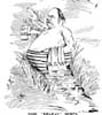 |
Why
Federate? Colonists had many concerns in common. National defence, colonial tariffs, the 'rivers question', railways, immigration, and a desire for 'White Australia' were all issues which needed action across Australia. However, each colony wanted to protect its own interests. Rivalries between the 'smaller' and 'larger' colonies, including the location of the Federal capital, had to be resolved before Federation was possible. The increasing responsibilities and cost of the administration of the Northern Territory were of particular concern to South Australians. View Images |
 |
"A
lady Federationist" In 1897 only the colony of South Australia had given women the right to vote. Note the name of Catherine Helen Spence in the voting handout from Labor candidates for the Federal Convention election of March 6, 1897. Although she failed to gain sufficient votes to become a delegate, in standing for election Spence became Australia's first female political candidate. View Images |
 |
National
Australasian Convention, 1897-98 The first session of the 1897-98 Federation Convention was held in Adelaide from March to May, 1897. Fifty delegates attended the Convention, with representatives from South Australia, New South Wales, Victoria and Tasmania elected by popular vote. The West Australians eventually arrived late, and Queenslanders did not attend. As members of the Drafting Committee, Edmund Barton, Richard O'Connor and John Downer produced a draft Constitution. View Images |
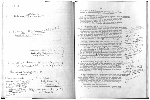 |
Constitution
in the making A prominent federationist, Josiah Symon was elected as a South Australian delegate to the 1897-98 National Australasian Convention. His annotated copies of the 1891 and 1897 draft Constitutions reflect his experience as a barrister, and show the Constitution as a work in progress. Symon was particularly concerned about the extent of power of Federal Courts, and he supported limiting Australian appeals to the British Privy Council. View Images |
 |
The
Federal'Yes' Josiah Symon formed the Commonwealth League in South Australia to promote the 'Yes' vote at the 1898 referendum, and so 'Advance Australia'. 'A post-card plebiscite on the Federal Bill' was conducted by Review of reviews to determine why 'leading men' would vote 'Yes'. View Images |
 |
The Federal 'Yes':
Wine and Federation The South Australian wine industry generally supported Federation which they saw as a means to eliminate intercolonial tariffs, and expand their markets. In May 1898 the South Australian Vignerons' Association unanimously agreed to the resolution 'That this meeting pledge itself to support Federation, and recommends its adoption to the winegrowers of the colony'. View Images |
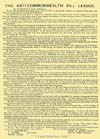 |
The Federal
'No': The anti-billites The Anti-Commonwealth Bill League issued a 'Yellow circular' detailing why people should vote 'No'. The Commonwealth League countered with a colourful reply. View Images |
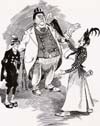 |
Who
could vote? Each colony had its own electoral laws and so the franchise differed between colonies. From 18 December 1894, adult women as well as men had the right to vote in South Australia. The Woman's Christian Temperance Union had been influential in securing the vote for South Australian women. Other colonies were not convinced that universal suffrage was desirable, and cartoonists lampooned the W.C.T.U. and female voters. In 1902 Australian women gained the right to vote in Commonwealth elections. In
South Australia several hundred Aboriginal people were
entitled to vote. At Point McLeay, Aboriginal men and women
voted at the Constitution Bill referendums. The Commonwealth
Franchise Act of 1902 gave the vote to adult men and
women, but prohibited Aboriginal people from voting, with
few exceptions. In 1962 indigenous Australians in all States
acquired the right to vote in national elections. |
 |
Ballot
box A war of independence or civil war did not create the Australian nation: Australians voted to unite. The Constitution Bill drafted at the 1897-98 Federation Convention was put to the voters at referendums in 1898 and 1899. In 1898 'Yes' votes succeeded in South Australia, Victoria and Tasmania, and New South Wales, but the required majority was not attained in the 'mother colony', and Queenslanders and Western Australians did not vote. A second series of referendums for the amended Constitution was held in 1899. This time a 'Yes' vote was recorded in all the colonies except Western Australia, which finally held a referendum in 1900, when they approved Federation. View Images |
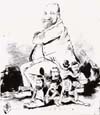 |
What's
the score? South Australians voted 'Yes' for Federation at both referendums. On 4 June 1898, 35,800 voted for the Constitution Bill, while 17,320 voted against it. In 1899, 65,990 voted 'Yes' for the amended Constitution, with 17,053 voting 'No'. The second referendum was conducted in South Australia on 29 April 1899 (6 May in the Northern Territory) to coincide with a general election. Other colonies held referendums later in the year, and Western Australians voted in July 1900. View Images |
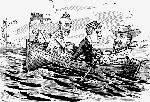 |
Off
to London Following the successful referendums of 1899, colonial governments requested that the Imperial Parliament pass legislation to establish the Commonwealth of Australia. Secretary of State for the Colonies, Joseph Chamberlain invited the colonies to send delegates to London to mediate the process. Arriving in London in March 1900, the Australians found that the British wished to make amendments to the Bill. The delegates strongly supported the Constitution as approved by the Australian voters, and eventually negotiated an acceptable compromise. On 5 July the Commonwealth of Australia Constitution Act was passed by British Parliament, and on 9 July, Queen Victoria gave Royal Assent. View Images |
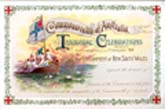 |
Celebrations:
a new nation On New Year's Day, 1901, the inauguration of the Commonwealth of Australia was conducted at a formal ceremony in Centennial Park in Sydney, following a lengthy procession through the extravagantly decorated city streets. Members of this procession included a military contingent from South Australia, and the estimated 250,000 people watching the parade included many leading citizens from this State. At the inauguration ceremony, Edwin Blackmore, Clerk of the South Australian Parliaments, read the principal document which instituted the new nation, the Proclamation of the Commonwealth. When
the Commonwealth of Australia came into being, the colonies
became States. Lord Tennyson was sworn in as South Australia's
Governor at the Town Hall with due ceremony. Additional
Commonwealth celebrations included church parades, and
military sports at the Jubilee Oval, followed by a 'Continental'
concert in the evening with a 'grand parade of illuminated
bicycles'. Local celebrations took place at several country
towns, such as Hawker, Mount Gambier and Yorketown. |
 |
Federal
Parliament The Duke of York and Cornwall opened the first Parliament of the Commonwealth of Australia at an impressive ceremony at the Exhibition Building in Melbourne on 9 May 1901. 12,000 guests witnessed the swearing-in of the elected Members of Parliament. Federal Parliament met in Melbourne until 1927, when it was transferred to Canberra. View Images |
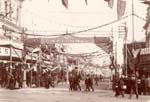 |
The
Royal visit: 'The people's welcome' In July 1901, Adelaide city was lavishly decorated to welcome the Duke and Duchess of Cornwall and York who visited as part of a tour of the capital cities, following the opening of the first Federal Parliament in Melbourne in May. The Advertiser headlines reflected Adelaide's enthusiastic reception of the Royal couple: 'Our future King and Queen. The people's welcome. The third city of Australasia. At its best. A mammoth crowd. Smiling guests and happy people. Streets gay and full of music'. View Images |
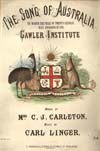 |
Song
and satire In 1859 the Gawler Institute awarded cash prizes to Caroline Carleton for the words, and Carl Linger for the music for The song of Australia. South Australians sang this rousing composition at school, and it featured at many official functions. Attempts were made to have The song of Australia recognised as the official national song, but in 1984 Advance Australia fair was proclaimed as the national anthem. View Images |
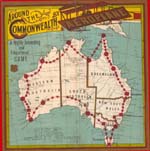 |
Children's
games Children's amusements from the Federation era. Items held in the Children's Literature Research Collection. View Images |
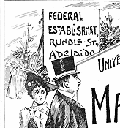 |
Federation
sells Manufacturers of a wide range of goods used the topical issue of Federation to promote their products. View Images |
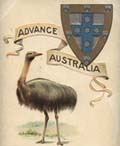 |
Advance
Australia The motto 'Advance Australia' was used officially and by popular publications. View Images |


